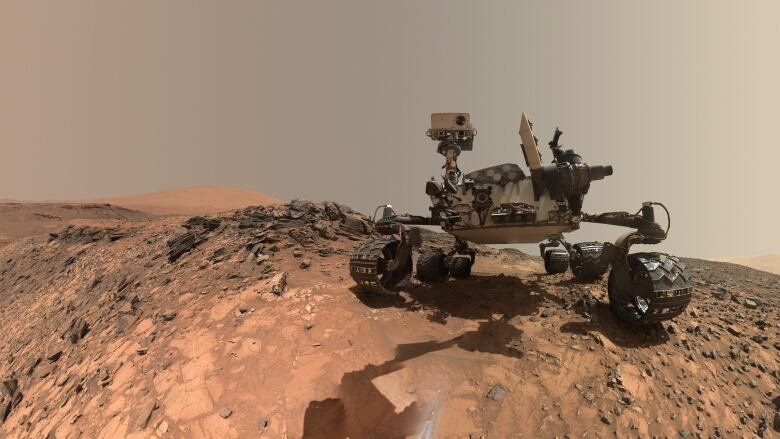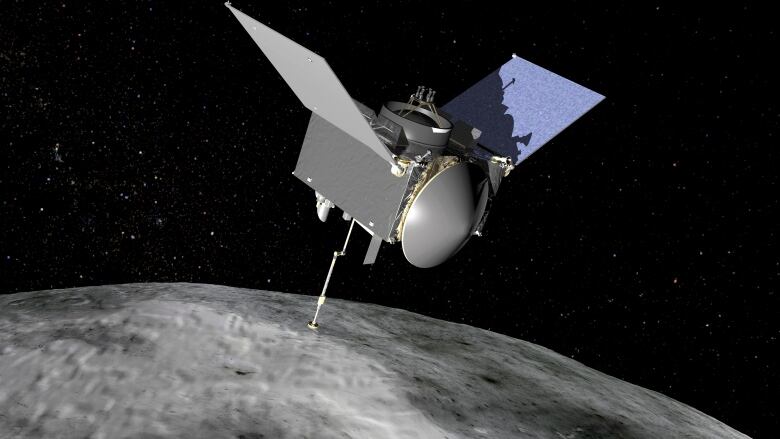'Cuteness culture' in space: Why we turn inanimate spacecraft into lovable explorers
Philae lander, OSIRIS-REx, Mars Curiosity Rover all have personalities and sometimes, even genders

They have names and personalities, they go on exciting journeys, and we're sad when they die. And we even create social media accounts just for them.
Much like we do with pets, we oftenassign human characteristics to spacecraft.
- Rosetta spacecraft finds lost Philae lander in dark crack on comet
- NASA asteroid mission hopes to learn origins of life on Earth
NASA's Mars Phoenix lander and Curiosity rover, and the European Space Agency's Philae lander and Rosetta spacecraft all cheerfully tweeted their progress as they carried out their missions, to the delight of thousands of fans online.
The way we talk about inanimate spacecraft is part of the rise of "cuteness culture," that has been growing since the early 90s, much like the internet's fascination with cat videos, said Teresa Heffernan, an English professor at Saint Mary's University in Halifax.

"It appeals to this world that's gentle, that's safe, that's childlike, and you have this warm feeling about the technology," said Heffernan.
This can make the science behind the missions more accessible, but it can also distract from the bigger questions behind space exploration. And sometimes, it can encourage stereotypical gender roles.
'w00t!!! Best day ever!!'
One of NASA's first Twitter accounts was for the Mars Phoenix lander mission. The robot was given a fun-loving, adventurous personality.
When the lander discovered ice on Mars, NASA broke the news via the account, using the internet-speak of the day.
Are you ready to celebrate? Well, get ready: We have ICE!!!!! Yes, ICE, *WATER ICE* on Mars! w00t!!! Best day ever!!
—@MarsPhoenix"It was one of the most popular Twitter accounts at the time, and it was really in the infancy of Twitter," said John Yembrick, the social media manager for NASA.
He said NASA's social media mantra is to make people care about what they do.
"NASA is sometimes viewed as complex science or engineering and what we want to do is tell a story to people and try to make things accessible," he said.
They write in plain language, relate to popular culture when they can, and use storytelling to attract and dazzle.
It's an attempt to connect with people in a personal way, said Christine Hoekenga, who's in charge of the social media account for NASA's OSIRIS-REx mission, which launched Thursday night.
"Hopefully people hear it as a voice and can start to imagine a spacecraft as an explorer who's really out there in space, trying to help answer some of the big questions that we are all wondering about," she said.
People engage with these crafts and probes, watching along as they carry out their missions. The spacecraft 'talk' to each other, too.
Curiosity calling @OSIRISREx. Come in @OSIRISREx. Congrats on a great launch. Enjoy the journey. Bennu, Bennu! pic.twitter.com/wzchKPg69q
—@MarsCuriosityWay to go @NASANewHorizons you did it! Cant wait to see what Pluto is like close up. Keep us posted on #PlutoFlyby https://t.co/3Aqbk9KhDx
—@Philae2014"Those tend to be very popular posts," said Hoekenga. "That's a flag that people are absorbing this information and hopefully people are clicking through to get a little more information about each mission."
When its lifespan ends, they often (somewhat morbidly) tweet their own 'deaths'.
Its time for me to say goodbye. Tomorrow, the unit on @ESA_Rosetta for communication with me will be switched off forever...
—@Philae2014This tendency to humanize is natural, said Beatrice Priest, a cultural historian at the University of Cambridge in Cambridge, U.K.
"Stories are everywhere around us in the world. They are how we imagine and interpret the world and the scenarios we face. We are also encouraged from childhood to anthropomorphize inanimate objects. I think that the treatment of spacecraft is an extension of this," she said.
- Good-bye, Philae. Comet lander's radio link cut off for good
- Unmanned SpaceX craft could be heading to Mars by 2018
Distractsfrom complicated issues
This kind of behaviour may be endearing, and beneficial for outreach.
Hoekenga and Yembrickfrom NASA don't see a downside, other than occasionally making some people sad when a spacecraft 'dies.'
But Heffernan says it's distracting.
"I'm not opposed to technology or space exploration, but I think that by encompassing it with this kind of cuteness, it's distracting us from some of the more complicated issues," she said.
These issues range from the cost of space exploration, the ethical and practical issues that arise from the concept of colonizing Mars, and environmental concerns like the creation of trash in space (the ESA, for example, has ditched the Philaeon a comet forever, and the Rosetta will soon follow).

"We should have a discussion about these issues as a society rather than reducing it to this kind of childlike thing," she said.
Heffernan called this a kind of propaganda for space exploration, saying it makes these spacecraft seem non-threatening and less destructive than they may actually be.
Gender concerns
Very often, spacecraft and probes are assigned a gender.
"He is an explorer at heart," said Hoekenga of the OSIRIS-REx. "He loves asteroids and space and science, but he also is kind of a renaissance spacecraft because he likes art and literature and pop culture and even sports."
She said it was designated male because of the name, which comes from a male Egyptian god.
The Rosetta spacecraft and its accompanying probe, the Philae lander, were also given genders.
"Philae was represented as a little boy who was going on an adventure and Rosetta was presented like a mother figure who was there to help him," said Kathleen Richardson, who researches the ethics of robotics at De Montfort University in Leicester, U.K.
But #notallspacecraft;Yembrickpointedout that the Mars Curiosity rover was never a ''he' or a 'she.'
Even so, gendering is common. Richardson said this reinforces traditional stereotypes that males are adventurous and brave, while women are nurturing and caring.
"It's an object, but now you've started to represent it through gender roles," she said. "It just reflects the power structures that are present in our society and deeply embedded into our psyche."












_(720p).jpg)


 OFFICIAL HD MUSIC VIDEO.jpg)
.jpg)



























































































